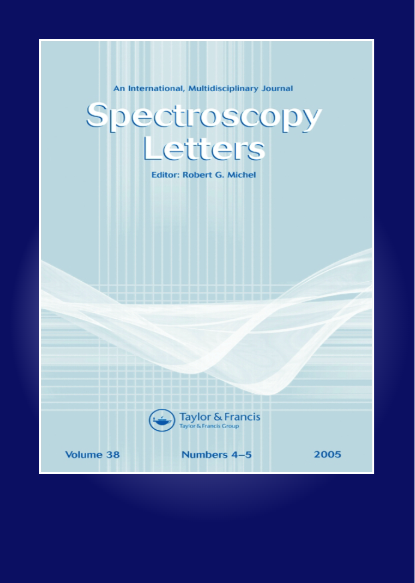2-氨基-1-萘磺酸的光谱分析,分子对接,以及几种溶剂的电子性质评价
IF 1.6
4区 化学
Q3 SPECTROSCOPY
引用次数: 2
摘要
摘要利用傅立叶变换红外光谱、拉曼光谱、紫外可见光谱和密度泛函理论研究了2-氨基-1-萘磺酸的光谱性质。利用势能的分布,对振动谱的分配进行了广泛的分析。自然键轨道被用来研究供体和受体之间的相互作用。分子静电电势用于量化分子的视觉生物活性部分。计算的不同溶剂的最高占据分子轨道和最低未占据分子轨道值指示了电子刺激特征。还对定域轨道定位器、电子定域函数、降低密度梯度、电子空穴分布分析和药物相似性进行了说明。分子对接研究表明,靶向氨基酸的取代基具有抗病毒作用。图形摘要亮点*对标题化合物的结构性质进行了详细研究*报道了FT-IR和FT-Raman等综合光谱分析方法*计算了HOMO、LUMO能隙和分子静电势分布。研究了标题分子的NBO和还原密度梯度分析。分子对接研究揭示了其生物学活性。本文章由计算机程序翻译,如有差异,请以英文原文为准。
Spectroscopic analysis of 2-amino-1-naphthalenesulfonic acid, molecular docking, and evaluation of the electronic properties of several solvents
Abstract The spectral properties of 2-amino 1-naphthalene sulfonic acid were investigated using Fourier transform infrared, Raman, and ultra violet-visible techniques as well as density functional theory. Employing the distribution of potential energy, extensive analysis of vibrational spectrum assignments has been performed. Natural bond orbital was used to study the interactions between the donor and acceptor. The molecular electrostatic potential is used to quantify the visual bio-active portions of the molecule. The computed highest occupied molecular orbital and lowest unoccupied molecular orbital values for different solvents indicates the electron stimulation features. Elucidation of localized orbital locator, electron localization function, reduced density gradient, electron-hole distribution analysis, and drug-likeness are also executed. As revealed by molecular docking research, substituents that target amino acids have antiviral action. Graphical Abstract Highlights *Detailed study on structural properties of the title compound is carried out. *Comprehensive spectral analyses, such as FT-IR and FT-Raman, were reported. *HOMO, LUMO energy gap and the molecular electrostatic potential distribution were calculated. NBO and Reduced density Gradient analysis of the title molecule were studied. Biological activity was revealed by molecular docking study.
求助全文
通过发布文献求助,成功后即可免费获取论文全文。
去求助
来源期刊

Spectroscopy Letters
物理-光谱学
CiteScore
2.90
自引率
5.90%
发文量
50
审稿时长
1.3 months
期刊介绍:
Spectroscopy Letters provides vital coverage of all types of spectroscopy across all the disciplines where they are used—including novel work in fundamental spectroscopy, applications, diagnostics and instrumentation. The audience is intended to be all practicing spectroscopists across all scientific (and some engineering) disciplines, including: physics, chemistry, biology, instrumentation science, and pharmaceutical science.
 求助内容:
求助内容: 应助结果提醒方式:
应助结果提醒方式:


